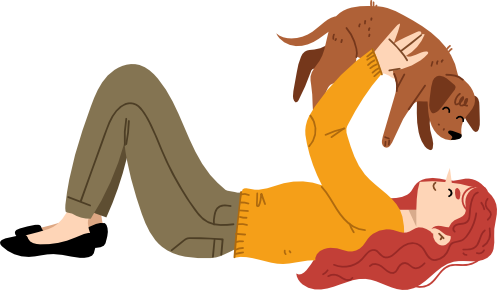In this episode, Kayla speaks to Sarah Stremming from The Cognitive Canine about what dog behavior consultants can learn from sport dog trainers.
Sarah’s niche is to work with behavior problems in performance or sport dogs, especially in agility dogs. Many of her clients bark at or bite at their handlers, bark, spin, or more inside the stressful environment of a training ring.
We break down what arousal actually is – because sport dog handlers and behavior consultants both often work with issues that are called “arousal problems.”
We talked about how we break down our problems with clients, and how it’s similar:
- What are we seeing?
- When is it a problem?
- Why is it a problem?
- What do we need to do to fix it?
We talked about how we build connection. Sport dog handlers often have great connection with their dogs, and this is often “broken” in behavior clients. Sarah points out that we’ve got to define what connection looks like so we can reinforce those behaviors.
We talk about how in pet dog training and behavior work, we often remove the dog from a problem situation and don’t actually talk about how to work through intense situations. Sarah’s clients want to get back into the ring, so Sarah has to teach her dogs how to do that. Sarah things that behavior consultants can up their game by teaching intensity sports. She also says that getting ready for intense situations is all about clear information.
- This includes teaching dogs where to look for treats
- Teaching dogs different cues for different rewards – so the dog knows that the tug is coming with one word and that food is coming with another word.
We discuss different tests to ask the dog if he’s ready for things before jumping into training. We can systematically and slowly add distractors, such as a bouncing ball, to teach the dog to listen in more difficult situations.
We discussed the idea of ensuring that we have a get out of dodge plan for when things go wrong.
Sarah talks about using pattern feeding as a great foundational game to help bring the dog down into some calm focus.
We closed out with Sarah’s Four Steps to Behavioral Wellness:
- Exercise. Sarah is a huge advocate of off-leash or long-line exercises in natural spaces instead of the short-leash urban walk. Being marched around on concrete isn’t actually relaxing for people (and probably for dogs, but we don’t have that research yet).
- Enrichment. Throw out your food bowl, use puzzle toys, shred something, and train every day.
- Nutrition. Anecdotally, a fresh food diet tends to be better for everybody than a processed food died. Find ways to incorporate fresh food into your dog’s died.
- Communication. Be prepared to reward your dog for good behavior all the time.
We close out with this: if the dog’s basic needs are not being met, we’re not going to get anywhere.
Finally, she reminds behavior consultants that visiting trials and constantly upping their game is a great way to expand their skills in distraction training and high-level behavior chains. There’s a benefit for behavior consultants to have an objective observer say that their trained behavior is up to a given standard!

